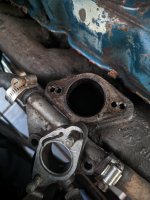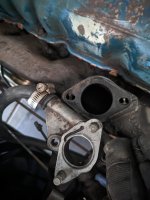Hey all!
I am trying to trace down the source of this loud, inconsistent tapping/squeak noise. I've pulled the fuel pump, looked under the valve cover, and even removed the exhaust pipe (had holes in it), with no luck of finding the source.
could this be from something not being properly lubricated? Bad lifters? Definitely seems like it's coming from inside the engine and not the transmission. Old Econoline drives drives just fine.
Any help is appreciated!
I am trying to trace down the source of this loud, inconsistent tapping/squeak noise. I've pulled the fuel pump, looked under the valve cover, and even removed the exhaust pipe (had holes in it), with no luck of finding the source.
could this be from something not being properly lubricated? Bad lifters? Definitely seems like it's coming from inside the engine and not the transmission. Old Econoline drives drives just fine.
Any help is appreciated!




